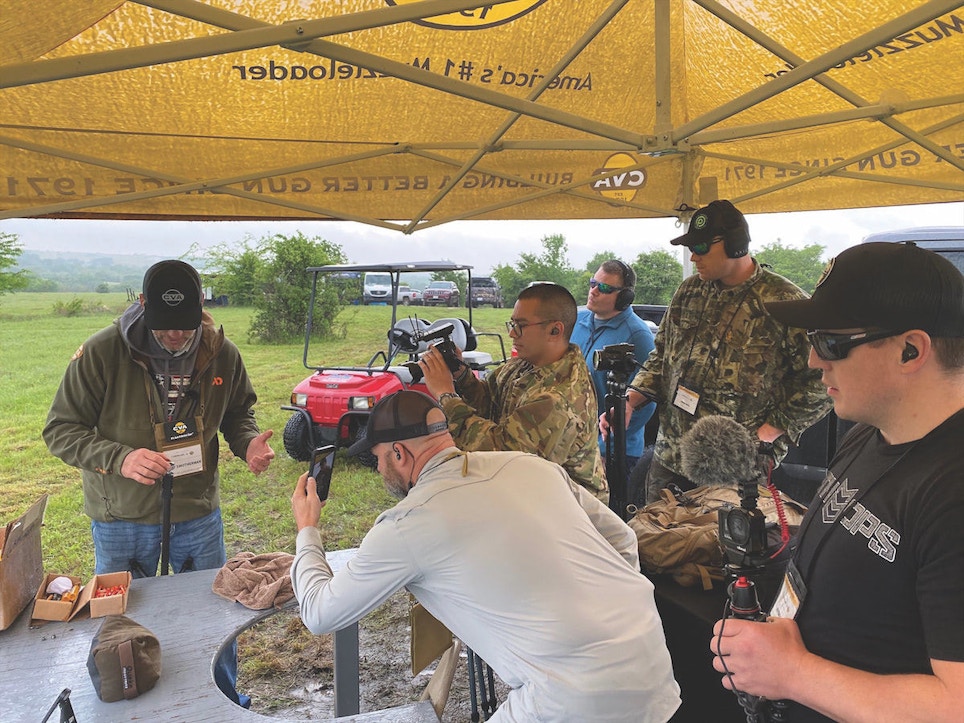It’s no stretch to say muzzleloaders have come a long way in the last 25 years. From the first inline rifles that sent caplock and flintlock shooters into a tizzy to the improvements of even the last five years, retailers have more options to sell, and hunters have more to shoot.
Connecticut Valley Arms, better known as CVA, was founded in 1971 as the inline revolution was beginning. Those early days had a learning curve in the factories and field. As with any transformation, it took time. Hiccups were encountered. Competition abounded between CVA and others for market share.
One part of that learning curve was the range of the rifles. Even then, 100 yards was still a long shot. Powders, sabots, bullet designs, ignition caps and other components began getting refined. Accuracy grew more consistent, and distances stretched. Today’s muzzleloaders easily reach 200 yards and more with .50-caliber bullets.
CVA’s Paramount series of muzzleloaders has stretched that range three times as far. Six hundred yards, you’re thinking? Don’t scoff. At a range event in Alabama in March, shooters of different ages, genders and abilities were clangin steel with the Paramount HTR. That’s the newest member of the Paramount family, introduced this year in .40- and .45-caliber with upgraded features.
This is one serious muzzleloader designed to reach out and touch targets at long ranges. The only reason the shooters in Alabama weren’t going past 620 yards was because there were no more targets past that. During a media event I attended in Texas in May for the HTR, the steel at 400 yards easily clanged all day despite gusty afternoon crosswinds pushing against the .45-caliber PowerBelt bullets.
HTR stands for “hunter,” and your big-game customers definitely may be interested. Whether pursuing whitetails in southern agricultural fields or elk out west, the Paramount HTR can hit them. The ethics of long-range shots at big game is up to the hunter. CVA officials emphasize they are not advocating risky or unethical shots on game. Hunters have to put in the time with the rifle and make the final decision on the trigger.
Rifle Aesthetics
The Paramount HTR is a bolt-action rifle with a free-floating barrel sitting on a stock designed for hunting. It’s a bit oversized compared to other Paramount stocks, which isn’t a negative. Hunters who want a solid stock with some heft will find it with the HTR.
The stock is dipped in the new Realtree Hillside camouflage pattern. It should easily blend into a variety of terrain and habitat throughout the country. The adjustable comb is a great touch. Along with getting solid cheek-to-stock fitting, the adjustability allows shooters to get exact eye-to-optic alignment.
The bolt throw is oversized, also a great touch for acquisition, and the trigger guard is big enough to easily accommodate gloved hands. It’s obvious after examining and shooting the rifle that it was designed by serious hunters for serious hunters who will encounter a variety of weather and terrain conditions.
Straight Shooter
The Paramount HTR is incredibly accurate in the hands of a good shooter thanks to a number of features. All these were carefully selected and tested with the .40- and .45-caliber PowerBelt bullets designed for the Paramount series. While the majority of hunters use .50-caliber bullets, CVA is banking on a revolution with the smaller calibers and powder charges that significantly increase muzzle velocities.
The free-floating Bergara barrel is nitride-treated stainless steel mated with an internal aluminum chassis. The rifle weighs 9.6 pounds, which helps with recoil management, although that wasn’t an issue during our range time. When you’re amped up about hitting steel at 300 or 400 yards with a muzzleloader, you’re not thinking about recoil.
If you know about or sell muzzleloaders, you’re probably wondering how the Paramount HTR has a free-floating barrel. The ramrod is supposed to go through the stock under the barrel, right?
But CVA and Bergara solved the problem by removing the ramrod from the design of the stock. That’s right. It’s not part of the riflestock. Gone are the days when the ramrod fit into the center of the stock. The Paramount HTR comes with a collapsible carbon-fiber ramrod and molle pouch to attach to a bag, vest or belt.
The HTR, like its other two Paramount cousins, is designed to handle super-magnum charges of Blackhorn 209 propellant. With PowerBelt 225-grain .40-caliber bullets or 285-grain .45-caliber bullets, the HTR hits eye-popping muzzle velocities for a muzzleloader. With the .40-caliber, it hits 2,740 fps and with the .45-caliber it hits 2,560 fps. CVA says those are comparable velocities to .30-06 and .308 centerfire rifles.
During our range time the CVA folks had the rifles dialed in on the targets to help everyone get started. After lunch, when a thunderstorm rolled through, spotters were busy eyeballing the targets and calling out corrections for the next shooter.
“Aim top left edge.”
“Clang!”
Three or four football fields away in the wind with a muzzleloader and sleek .45-caliber bullet? Very cool. Fortunately, the deer and hogs at the range were safe from our crew as steel was the only objective for the day.
But I easily could see the Paramount HTR in action for hunting from Florida to the Rockies, for anything from hogs and thin-skinned whitetails to big elk, moose or exotics. Your customers probably will, too.
Ask your distributor about this souped-up smokepole before hunting seasons arrive.








